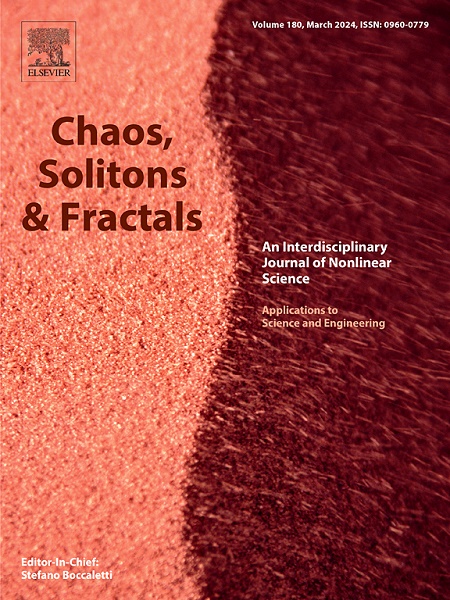Analysis of neural network methods for obtaining soliton solutions of the nonlinear Schrödinger equation
IF 5.3
1区 数学
Q1 MATHEMATICS, INTERDISCIPLINARY APPLICATIONS
引用次数: 0
Abstract
The paper addresses the practically significant problem of transmitting signals through nonlinear optical media by solving generalized nonlinear Schrödinger equations using various modifications of Physics-Informed Neural Networks (PINNs). The study provides numerical soliton solutions for Schrödinger equations of the order as high as four. To tackle this problem, the paper compares segmental modifications of PINNs, including BC-PINNs, FB-PINNs, and MoE-PINNs. Additionally, an adaptive option for selecting collocation points is proposed and explored. The efficiency of the numerical solutions is evaluated using three approaches: comparison with the precise analytical solutions, and two metrics based on conservation laws. The results show that the modified segmentation approach, combined with the developed adaptive selection of collocation points, greatly improves the accuracy and the convergence of PINNs compared to the initial version of the method. On such example problems as the interaction of a soliton with a Gaussian function, two solitons interaction, and the solution of a 4th-order equation, the proposed method demonstrates improved convergence of the numerical solution.
求解非线性Schrödinger方程孤子解的神经网络方法分析
本文利用物理信息神经网络(pinn)的各种修正,通过求解广义非线性Schrödinger方程,解决了非线性光介质中信号传输的实际问题。该研究提供了高达4阶的Schrödinger方程的数值孤子解。为了解决这个问题,本文比较了pin码的分段修改,包括bc - pin码、fb - pin码和moe - pin码。此外,提出并探索了一种自适应选择搭配点的方法。数值解的效率用三种方法来评估:与精确解析解的比较,以及基于守恒定律的两个度量。结果表明,改进后的分割方法与开发的自适应搭配点选择相结合,与初始版本的方法相比,大大提高了pin n的精度和收敛性。对于孤子与高斯函数的相互作用、两个孤子的相互作用以及四阶方程的解等实例问题,该方法证明了数值解的收敛性。
本文章由计算机程序翻译,如有差异,请以英文原文为准。
求助全文
约1分钟内获得全文
求助全文
来源期刊

Chaos Solitons & Fractals
物理-数学跨学科应用
CiteScore
13.20
自引率
10.30%
发文量
1087
审稿时长
9 months
期刊介绍:
Chaos, Solitons & Fractals strives to establish itself as a premier journal in the interdisciplinary realm of Nonlinear Science, Non-equilibrium, and Complex Phenomena. It welcomes submissions covering a broad spectrum of topics within this field, including dynamics, non-equilibrium processes in physics, chemistry, and geophysics, complex matter and networks, mathematical models, computational biology, applications to quantum and mesoscopic phenomena, fluctuations and random processes, self-organization, and social phenomena.
 求助内容:
求助内容: 应助结果提醒方式:
应助结果提醒方式:


